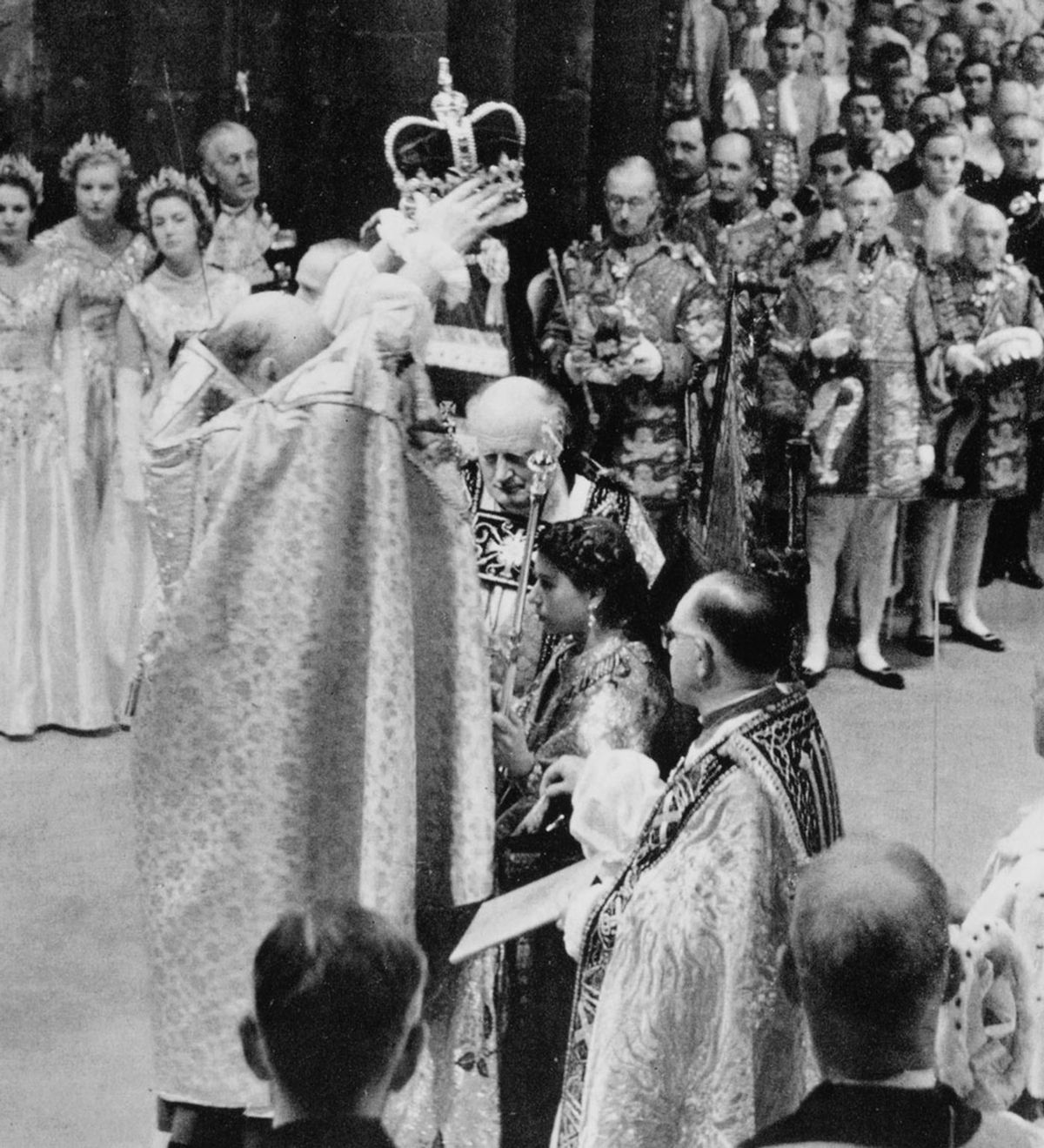On 6 May, in a thousand-year-old ceremony, the last surviving coronation rite in the Western world will take place in London. Charles III will sit over the Stone of Destiny, on a 720-year-old chair named after an English saint king, and be crowned with the same crown that crowned the last reigning Stuart monarch. As the choir sings the words from the Bible, “Zadok the Priest and Nathan the prophet anointed Solomon king and all the people rejoiced”, he will be anointed with oil from the Mount of Olives that has been blessed by the Orthodox Patriarch of Jerusalem in the Church of the Holy Sepulchre. There will then be a loud cry of “Long live the king”.

Douglas MacPherson, St Edward's Chair, with the Stone of Destiny in place; a news illustration made before the coronation of George V, 1911 Chronicle / Alamy Stock Photo
St Edward's Chair
The most sacred part of the proceedings is not the crowning, but the anointing (which will not be filmed, out of respect). The king sits in a battered old seat called St Edward’s Chair, named after Edward the Confessor and made for King Edward I in 1300-01 to hold the Stone of Destiny, also known as the Stone of Scone, on which the kings of Scotland were crowned from time immemorial until the last king was defeated by Edward I in 1296. This chair was once gilded and painted, but despite having been used at every coronation since then, it was left surprisingly unprotected at some point because it is carved with graffiti, including the information that a certain P. Abbott slept in it 15/16 July 1800. The Stone of Scone was sent back to Scotland in 1996 by the then prime minister, John Major, but is being returned for the ceremony.
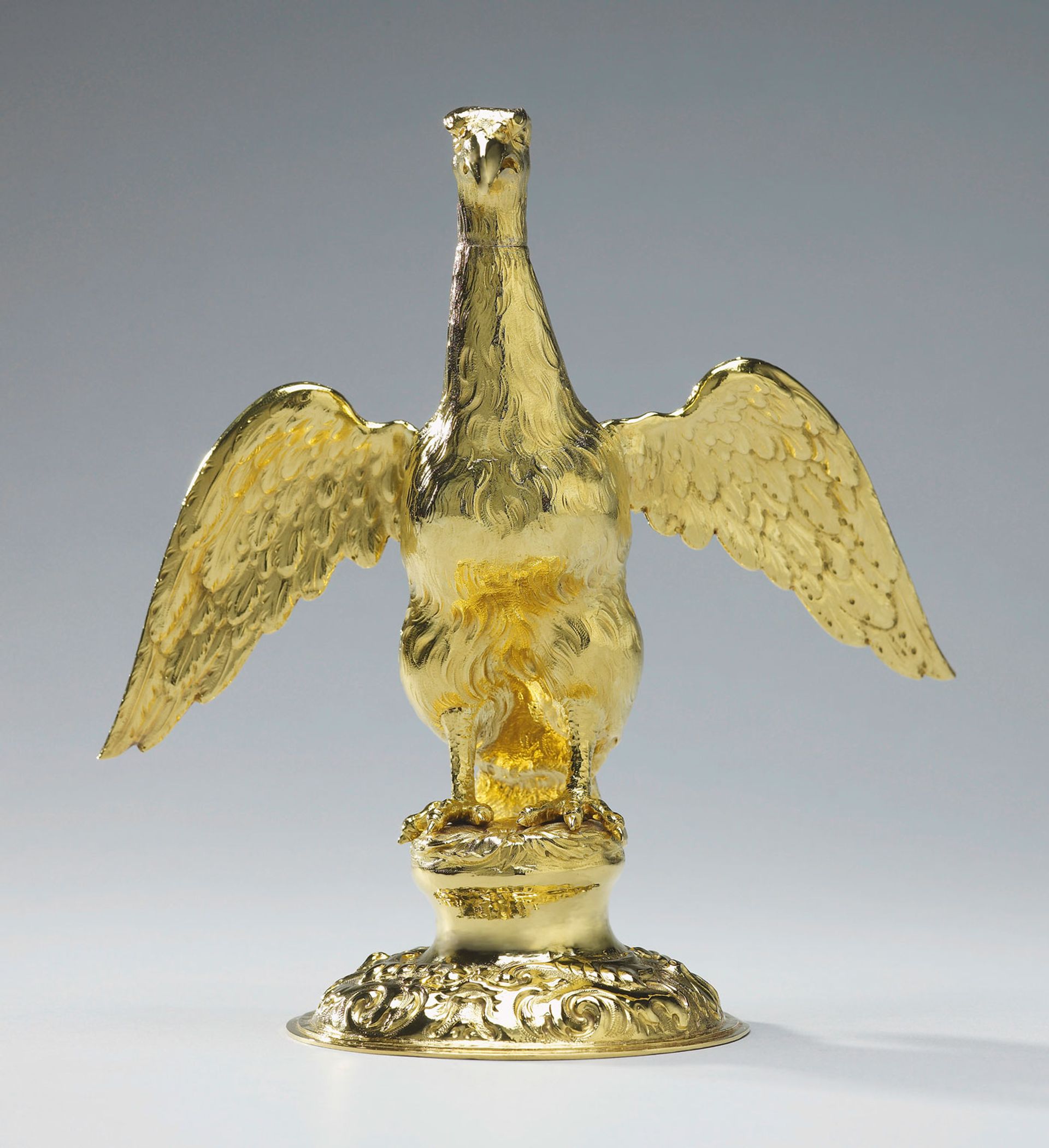
The ampulla, 1661, in the form of a gold eagle, which holds the anointing oils for the coronation Royal Collection Trust / © His Majesty King Charles III 2023
The gold eagle
The king will be anointed on his breast, head and hands with the oil contained in the ampulla, a gold eagle made for the coronation of Charles II on 23 April 1661, the previous vessel having been melted down in 1649 by the Commonwealth after the execution of Charles I. It is an eagle to evoke the form of the first such container of holy oil, supposedly given to St Thomas à Becket by the Virgin Mary nearly 900 years ago.
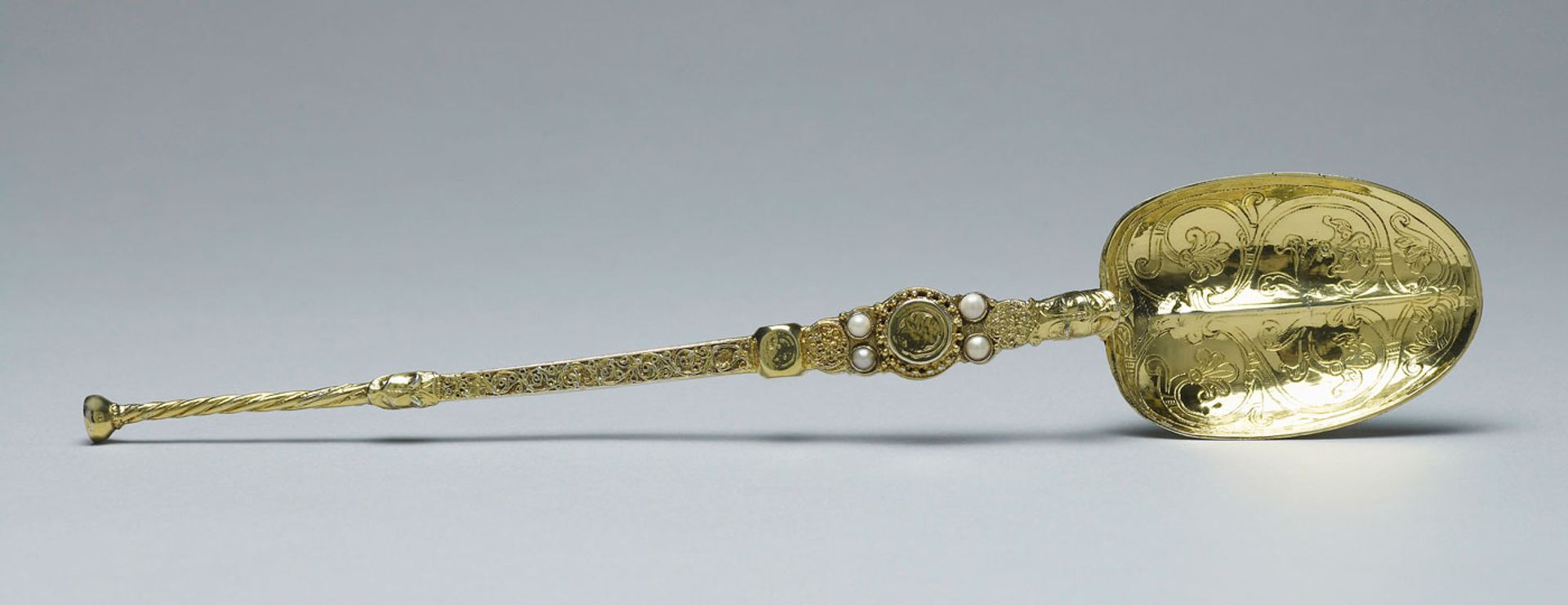
The Coronation Spoon, silver gilt, 12th century Royal Collection Trust / © His Majesty King Charles III 2023
The gold spoon
The gold spoon, or Coronation Spoon, into which the oil is poured is the oldest object used in the ceremony, dating back to the 12th century. It was saved from destruction in 1649 by a loyal civil servant who gave it to King Charles II on the restoration of the monarchy eleven years later.

Fortunino Matania, George VI in coronation robes: the Imperial Mantle, with St Edward's Crown, 1937 The Print Collector / Alamy Stock Photo
The gold mantle
After the king is anointed, he will be clothed in priestly vestments: a white robe, a tunic of cloth of gold, a stole and a cope-like coronation mantle, known as the Imperial Mantle—made for the unbelievably lavish coronation of George IV in 1821—of gold and silver thread and silk, embroidered with the national flowers of the United Kingdom.

St Edward's Crown Royal Collection Trust / © His Majesty King Charles III 2023
St Edward's Crown
Dressed as a priest-king, Charles III will then be crowned by the Archbishop of Canterbury with St Edward’s Crown, made for Charles II, but with many later alterations. Afterwards, however, the king will put on the Imperial State Crown (the word imperial referring not to the colonial empire but to the English monarchy’s autonomy), which has been recreated six times since its first appearance in the 16th century.

The Imperial State Crown Royal Collection Trust / © His Majesty King Charles III 2023
The Imperial State Crown jewels
The Imperial State Crown contains two jewels with an extraordinary history. The huge red stone in front, known as the Black Prince’s ruby (actually a spinel), belonged to Abu Said, a 14th-century Moorish Prince of Granada, from whom it was taken by Pedro the Cruel, King of Castile, who gave it to the Black Prince, so-called for the colour of his armour, in gratitude for military services.
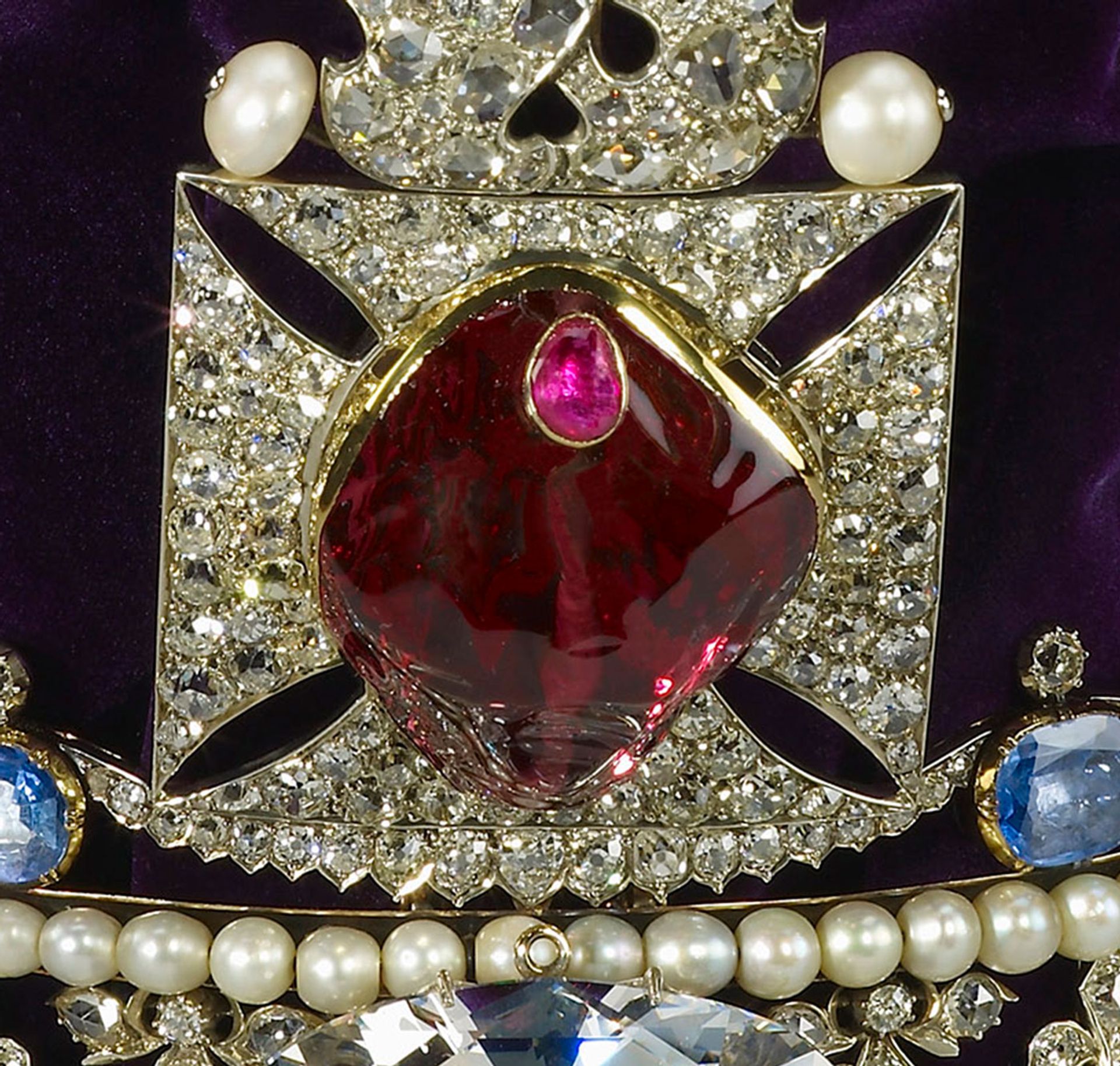
The Black Prince's ruby, on the front of the Imperial State Crown Royal Collection Trust / © His Majesty King Charles III 2023
It was then worn in famous battles by two medieval kings whom we think we know through Shakespeare: Henry V, victorious at Agincourt (“We few, we happy few, we band of brothers”), and Richard III, defeated at Bosworth, crying, “A horse, a horse, my kingdom for a horse” as he fights to the death. The recut sapphire in the cross at the top is both a holy relic and a Crown Jewel because it was taken 900 years ago from the tomb of the 11th-century Anglo-Saxon king and saint, Edward the Confessor.
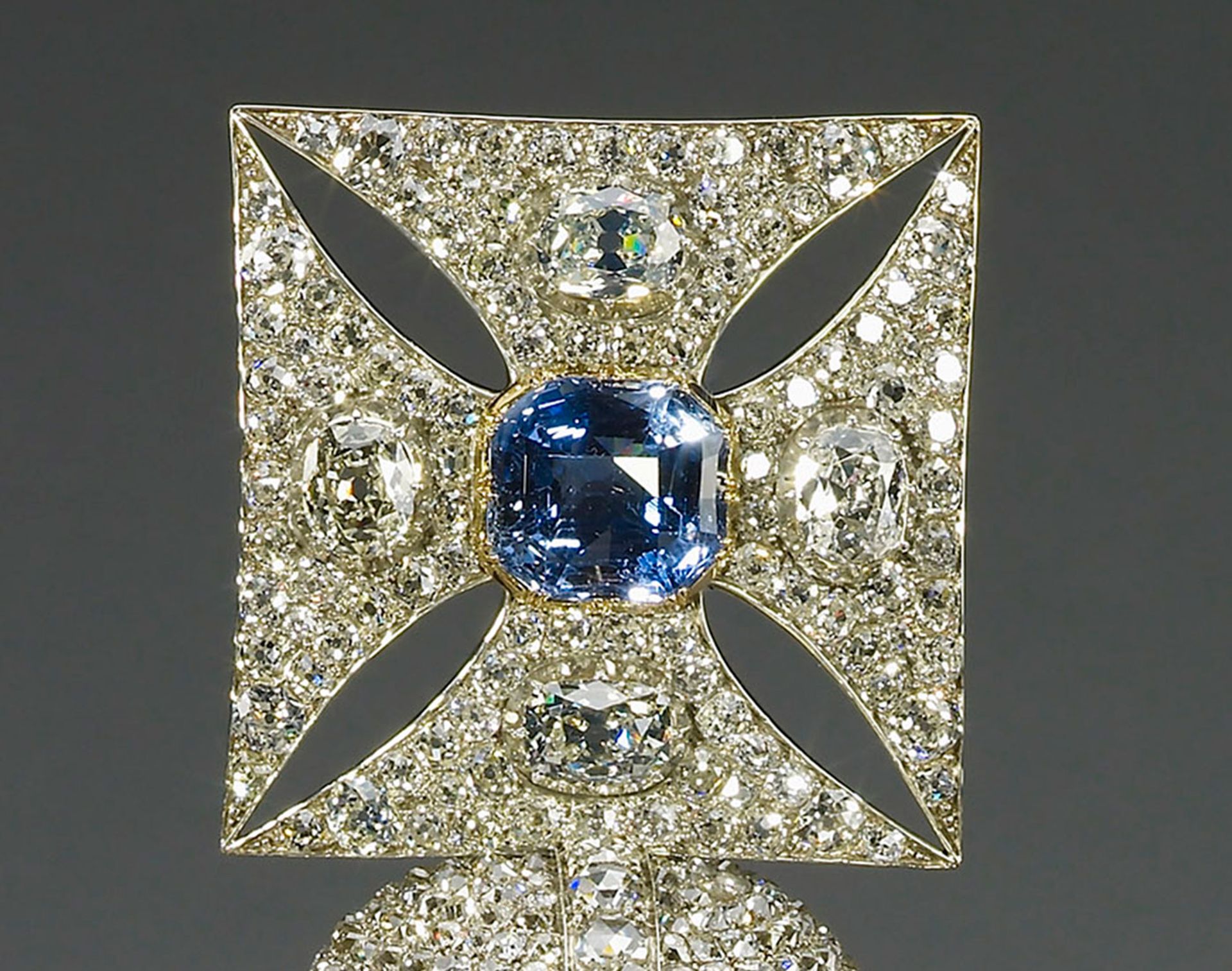
The sapphire from the tomb of St Edward the Confessor is set in the cross of the Imperial State Crown. Originally a cabochon, it was faceted in the reign of Charles II Royal Collection Trust / © His Majesty King Charles III 2023
All these, and the other regalia used in the Coronation, do not belong to the king, but to an abstract entity called the Crown and if the monarchy is ever abolished, they will devolve upon the state and probably be kept as museum objects, stuff of antiquarian and art-historical interest, but no more. Today, however, they still—just—share in what remains of the archetypal aura of kingship. If you missed out on medieval history, think Lord of the Rings, King Aragorn, and the jewels of power, the rings and the Elfstone.
These things are more than just things.


